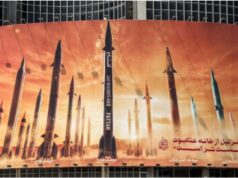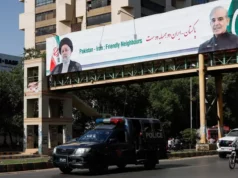National Will & Leadership Cornerstone for comprehensive national power

By Col Satish Lalotra
‘Power without a nation’s confidence is nothing’—Catherine the great.
The phrase ‘national will and leadership’ when used in normal conversation, even among the well-heeled and informed tend to touch a very wide canvas of images. Colloquially,the concept often looks as if everyone present knows the very adage in its entirety. But the truth is that, even in relative scholarly literature an analytically useful definition of the concept does not exist.
The short cut for national will is generally some reference to the will of the people or support of the majority party in a democratic set up like India. Because of the decisive role national will plays, leaders need to understand what it is and beyond its definition-the ways in which they can articulate and cultivate it.
Leadership is the singular most important factor influencing the performance and government in any country’s set up. For a government and the leaders which form an important cog of the entire gamut of machinery that goes for good governance to keep us safe, provide vital services and keep the economy chugging along the lines of expected framework of pragmatic economic tenets, the nation needs to have good leadership and a steely will.
Building national will and leadership is no child’s play and requires an assiduous approach from a scratch with underpinnings of national character and collective resolve as its two main pillars.
When seen in the light of CNP (Comprehensive national power) which is a Chinese measure of general power of nation state, these two facets i.e. national will and leadership are co-terminus in nature and the most important hammer to strike at the anvil of national identity and outreach to forge a strong nation in the comity of world powers.
Since the CNP (Hence forth referred to) is the direct result of many sub-sets of which national will and leadership are two important ones, I in my this write up have first tackled the overall concept of CNP and built the sub -set of leadership and will power on it subsequently.
CNP as a concept was first introduced by the Chinese from the 1990s in their official documents. A 1995 definition of CNP refers to it as the totaling of a country’s economic, military and political powers in a given period. It signals the country’s comprehensive development levels and its position in the international world order with an index based on a mathematical calculation.
In fact national power is defined as the distinct ability of a particular country to attain its stated aims in the realm of its overall strategic objectives by means of a direct action. In a country as diverse and culturally as disparate as India with a democratic dispensation since 1947, it is but natural that there is an intense interplay of multiple factors such as strength of economy, human resources, availability of natural resources knowledge and science and technology.
In fact the concept of CNP is not new to the Indian milieu since ancient times. The ‘Sun Tzu’ of India ‘Kautilya’ or ‘Chankya’ as he was commonly known, had propounded in his master treatise -‘Arthsashtra’ the essence of CNP in a much more subtle way when he said-‘The king, the ministers, the country, the fort, the treasury, the army and the friends and the enemy are the elements of sovereign’.
To obtain an accurate perspective of national will power as also analyze it to measure CNP Quantatively, in comparison with other countries was first undertaken in a study evolving a complex and comprehensive index of power in the US by American intelligence analyst Ray Clive In 1977.
In the Indian context the NSCS, National Security Council secretariat which was formed by the then PM, Atal Bihari Vajpayee in the aftermath of 1999 Kargil conflict has been in the forefront of publishing a national security index from time to time since last two decades.
It has been given to understand in the last twenty years or so that a plethora of factors ranging from economy to military to human resources/national will and leadership have been the anchor around which the concept of CNP revolved, in addition to several others which I am trying to delineate in subsequent paragraphs.
When these three main factors as mentioned above are broken down to help understand the concept of CNP, the sub- factors behind and forming part of the former tumble out to complete the mosaic of a full CNP as follows:-
* Economy
* Military
* Internal security and social harmony
* Human capital
* Governance
* Knowledge information
* Science and technology
* Geography and natural resources
* Foreign policy and diplomacy
* National will and leadership.
Though almost all the above mentioned factors equally represent to measure the tool of CNP as an effective benchmark of a country’s strength, but for the sake of this article I am laying express stress on the last facet i.e. National will and leadership from which all else sprout and shape up a country’s destiny.
This concept of national will and leadership assumes all the more importance in the 60th year of ‘Sino-Indian’ conflict of 1962 which saw India’s moral, social, military and national fiber straining under tremendous pressure wrought by the Chinese onslaught across the mighty Himalayas.
Though social and political scientists the world over may use different yard sticks to bisect or trisect /quadrisect the national will as per their understanding, but to me the five most plausible constitution of national will are as follows in the Indian context—
* Level and degree of cultural integration of the people of India in a feeling of bonhomie and belongingness which includes ethnicity, language and religion as well as rooting for their territorial identity.
* Equal and effective capacity of government policy implementation.
* Strength of national leadership and social discipline.
* Identification of correct Geo-political cum strategic goals in the neighborhood and across the world.
* Relevance of strategy to national interests.
I shall dwell upon these issues in a manner which may help a reader discern each of the above facets under the prism of national crisis of 1962 ‘Sino -Indian border war. Since 2022 being the 60 th year of the conflict and casting its ominous shadows in the form of Galwan even today, its natural that we ought to revisit CNP in all its forms.
The national will and leadership immediately after independence and right till the 50s /60s was guided and cemented by the towering personalities of leaders like Nehru, Patel etc. But then as is true with any other massive country of India’s size, internal dissensions in the form of linguistic issues, opposition to imposition of Hindi language in the southern states, the raging Nagaland and Manipur insurgency, as well as the social and geographical disconnect of NE with rest of India were few Gordian knots to be unraveled at that point of time.
Some may argue that these issues were a natural progression of integration of 565 princely states into the union of India who brought them as a baggage of burden with them. Be that as it may, the above incongruities on the national firmament of unity was stark and clear impinging upon the national will and leadership of that time.
Coupled with this fact was the British legacy which was left behind by them in the form of unresolved frontier areas of NEFA &NWFP (Now in Pakistan) where the local administration was more or less absent thus making them a fertile ground for foreign intervention.
This trend of absence of running of writ of the Indian state in NEFA (Arunachal Pradesh) manifested itself when Major Ralengnao Khating of Assam rifles was sent in 1951 to liberate Tawang on the express orders of the then PM Nehru.
Over here the Tibetans and Chinese had become de facto rulers appropriating all the rules of tax collection, policing and superintendence etc. The present day lingering of NE and J&K insurgency is the unfinished agenda of those times.
The facet of equal and effective government policy implementation immediately after independence was skewed more towards nation building in terms of dams, canals, IITs, medical colleges and the like. A small portion of the CNP in terms of knowledge and scientific base as explained by me in the above paragraphs.
With the knowledge of hindsight it can be safely said now that the laying of stress on selective facets of CNP at the expense of equally more important i.e. Military made the concept of CNP of India look cosmetic in nature. Coupled with the fact that India in the year 1951/52 set in motion the famous ‘Himmat singhji committee’ report on border area development with special emphasis on NE development which didn’t make much traction and was lost in the labyrinthine of MOD/MOH cost us the fateful year of 1962.
A perfect example of faulty policy implementation of CNP. The tenet of ‘Strength of national leadership and social discipline though a strong point in the early years of our rise from independence started getting corroded under the onslaught of various scandals like the infamous ‘Jeep scandal’ of 1948 under which supposedly corrupt high commissioners cum ministers in the Nehru cabinet were under the scanner. Though no modern country is bereft of the malaise of corruption, but a preponderance of the same undercuts your CNP in any case.
Having been under the occupation of foreign powers/rulers for centuries stymied the stimulation of any fruitful foreign policy cum long-term defence policy of our own. The last two tenets of CNP as enunciated by me in the preceding paragraphs laying stress on identification of correct Geo-strategic cum political goals in the neighbourhood and trying to align them with the national interests proved Achilles heel for our country’s leadership who were hamstrung by the lack of any strategic sagacity.
The fact that Mr Nehru had kept the foreign ministry under his wings which is closely intertwined with that of nation’s defence, each drawing sustenance from either required an open debate about its implementation, infirmities. Sadly that was not to happen till nudged by the Chinese in 1962.
The unilateral decisions in the form of ‘Forward policy, keeping the Sino-Indian border under the ministry of external affairs with border patrolling under the ministry of home, lackluster implementation of Himmat singhji committee report on border area development, obfuscation of Chinese threats in the form of building of Aksai chin road in the early 1950s, closing down and unilateral withdrawal of signal/military posts along with business ventures from places like Gartok, Yatung, Kashghar, Lhasa etc in the immediate aftermath of Tibetan occupation by the chinese painted Nehru in a very complaint manner.
The very fact that India as late as 1954/55 went hammer and tongs to placate chinese by way of ‘Hindi chini Bhai Bhai’ despite ominous signals emanating from across the border showed us that we abjectly failed to co-align our national interests with that of our neighborhood and surrendered our sovereignty at the altar of expediency of situations as they emerged.
By articulating a national vision and adopting a structured programme with clear and present dangers a nation state can rise like a phoenix from ashes.



